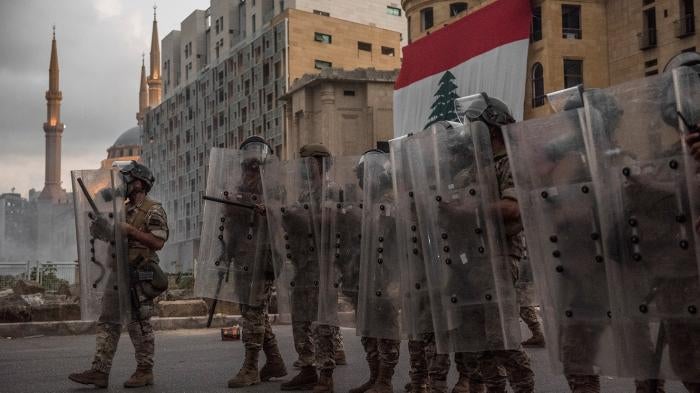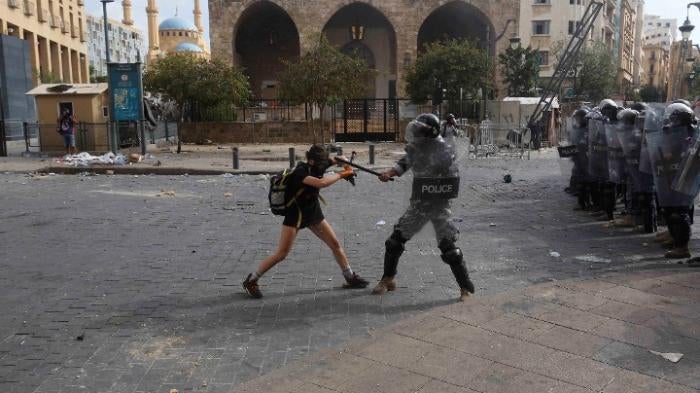Lebanon: Lethal Force Used Against Protesters
Read a text description of this video
Beirut, Lebanon
After Beirut was devastated by the August 4 explosion at the port, tens of thousands of protestors gathered in the city to express their rage and frustration over the government’s incompetence and corruption.
This video contains graphic and disturbing images. Viewer discretion advised.
Lebanese security forces used excessive and at times lethal force against mostly peaceful protestors. On August 8, Human Rights Watch witnessed beatings and assaults and were themselves mistreated by security forces ourselves.
Human Rights Watch also documented the use of live ammunition against protestors.
In this incident, security forces fired multiple live rounds at protestors as they rescued an injured man. Potentially lethal force like this should not be used unless required to protect life.
We know these were live rounds because Human Rights Watch went to the site. We found the bursts seen here in the video match the new bullet damage on the wall.
And here a soldier from the Lebanese army fires six shots from his assault rifle in the direction of the Al Amin mosque where hundreds of protestors had gathered.
For the first time, Human Rights Watch documented the use of shotgun-fired metal pellets by Lebanese security forces. These “birdshot” cartridges fired from shotguns can contain hundreds of pellets in a single round. Metal pellets were the main cause of serious injuries to protesters’ eyes and vital organs.
“Birdshot” spreads out after being fired. t many of the victims we saw were shot at close range, with dozens of pellets embedded in their bodies.
The pellets can lead to chronic pain, fatigue, nerve damage, and other serious health effects. .
Security forces also fired rubber balls at protestors, aiming at their faces, heads and necks.
Security forces launched large volumes of tear gas in downtown Beirut. One grenade, the G1 CS, is designed to be fired 200 meters and is capable of dispersing tear gas over 800 to 1,000 square meters. Around Martyr’s Square, security forces fired it directly at ambulances and health workers caring for injured protesters.
Dr, Mouin Jammal
You see someone who is providing aid, wearing a uniform, treating a bleeding wounded person, and you throw a tear gas grenade at him? Are these really soldiers?
International norms state that tear gas should be fired from a high angle and only be used to disperse unlawful or violent assemblies.
Human Rights Watch observed security forces firing tear gas cartridges directly at protesters’ heads and torsos. This woman was hit by one in the shoulder.
All Lebanese security forces have denied shooting at protestors with live ammunition. But the evidence proves otherwise.
Security forces should immediately suspend the use of shotgun-fired metal pellets and other similar ammunition. The public prosecutor should open an independent investigation into the unlawful use of force.
International donors to Lebanon’s security forces should investigate whether their support is going to abusive units, and if so, halt it immediately.
(Beirut, August 26, 2020) – Lebanese security forces used excessive and at times lethal force against mostly peaceful protesters in downtown Beirut on August 8, 2020, causing hundreds of injuries, Human Rights Watch said today.
Security forces fired live ammunition, metal pellets, and kinetic impact projectiles such as rubber balls, including at health workers, and police deployed excessive quantities of tear gas, including at first aid stations. Several teargas cartridges were fired directly at protesters, striking some in the head and neck. Security forces also threw stones at protesters and beat them. The forces involved included the Parliament Police, the Internal Security Forces (ISF), the Lebanese Armed Forces (LAF), and unidentified forces in civilian clothing.

